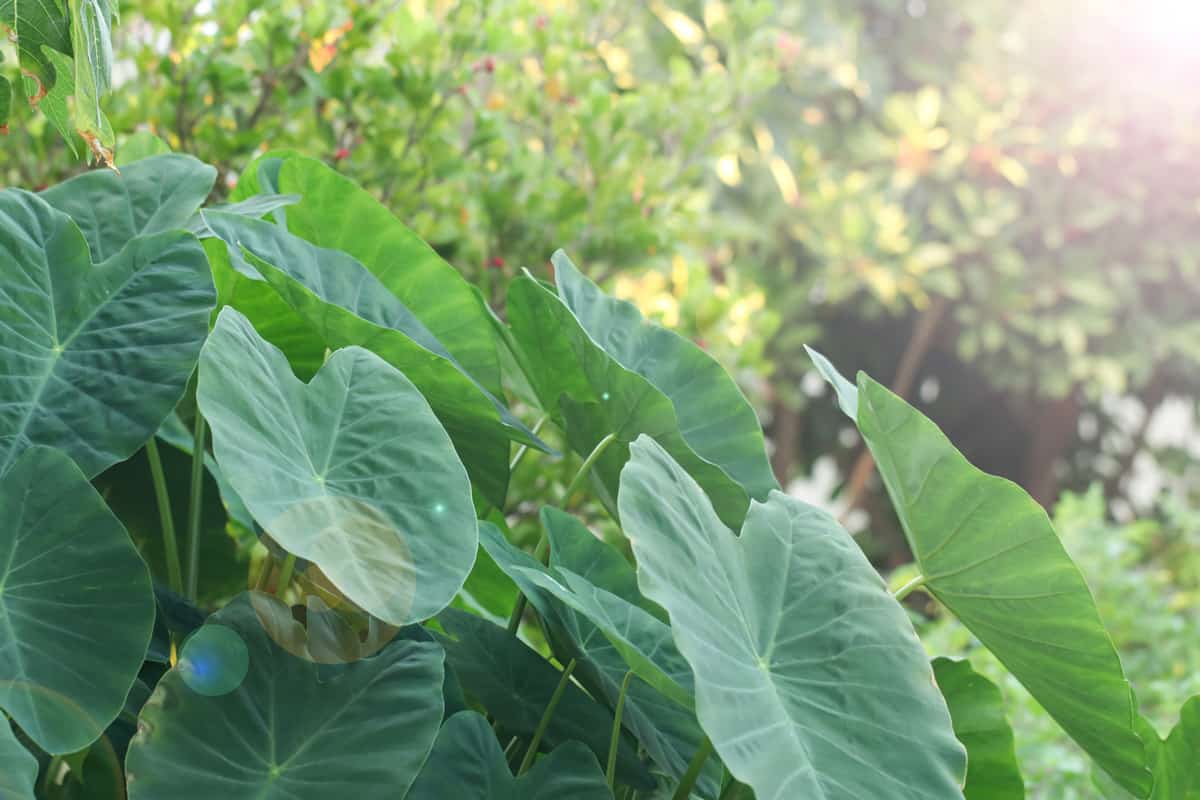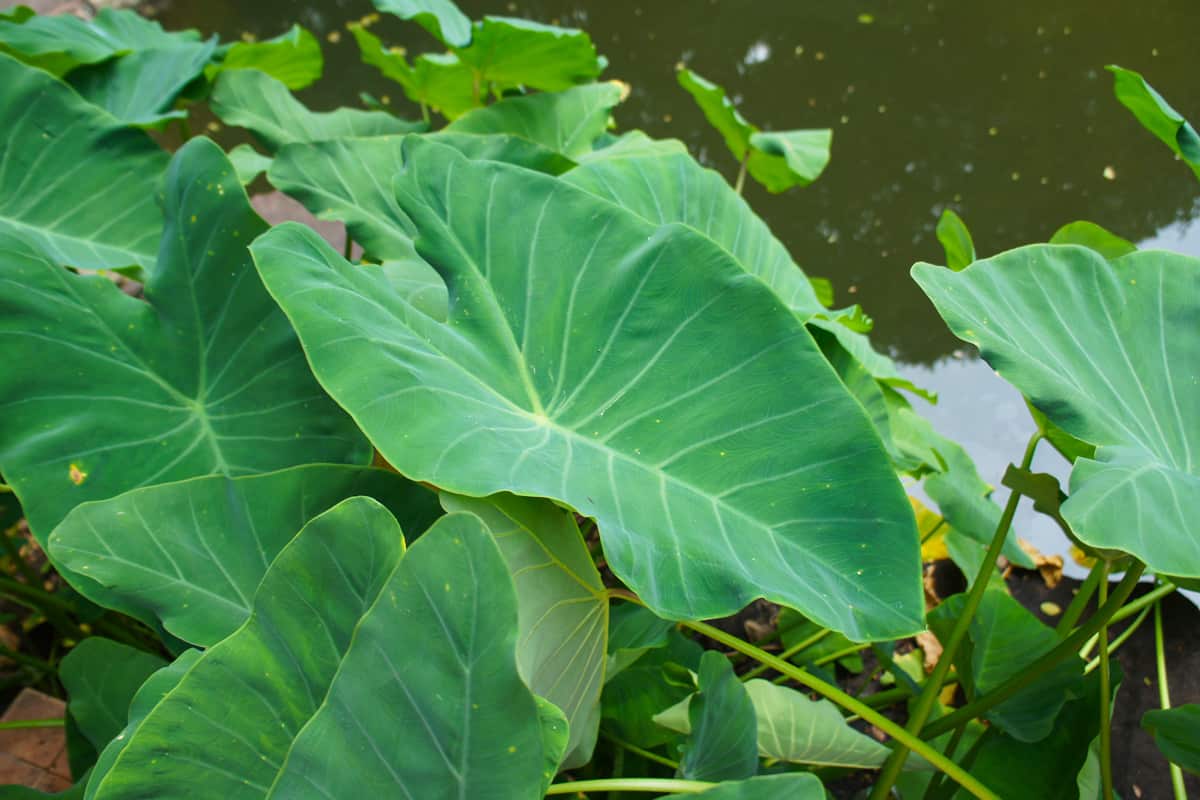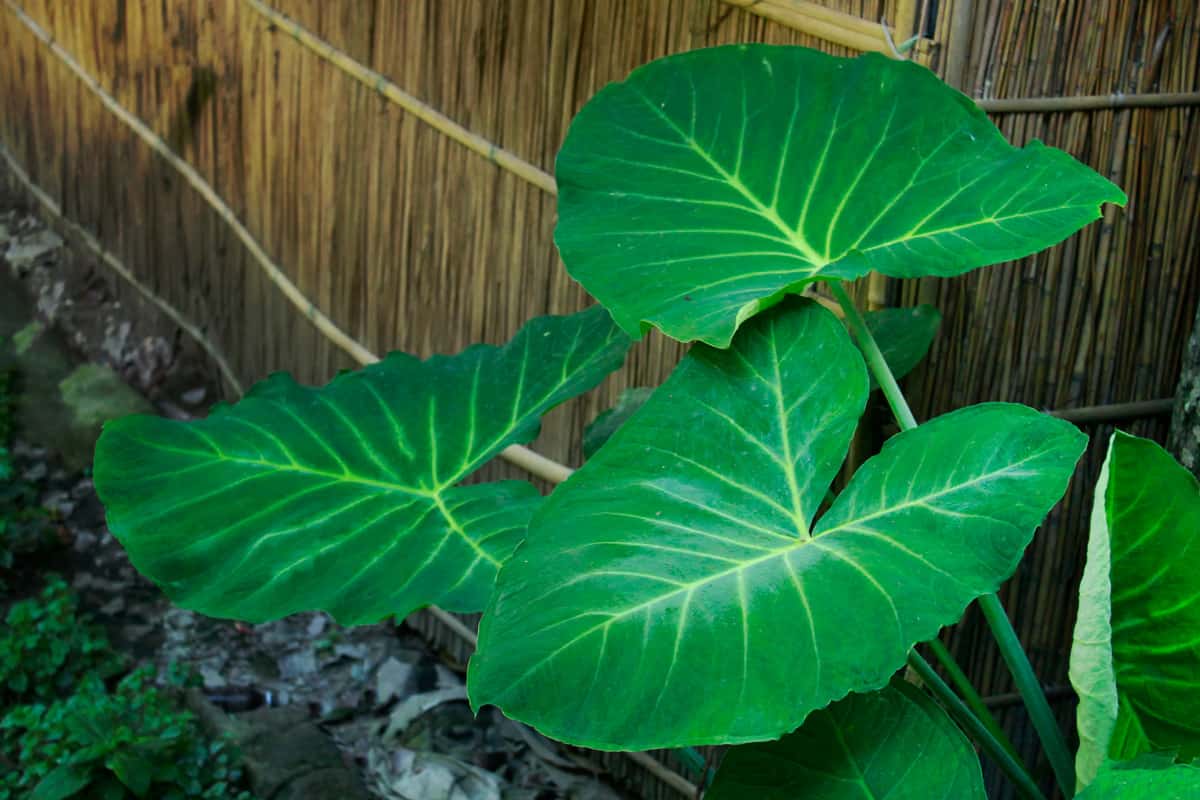Deciding the best place for your plants can sometimes be challenging. Do you want to grow elephant ears in your garden but don't know if they prefer full sun? Will elephant ears grow in the shade? We've done extensive research into these questions and have the answers below. Let's dive right in!
Elephant ears will grow in the full sun as well as partial shade. Generally, this species prefers a bit of shade throughout the hotter afternoon, so some coverage is better.
Furthermore, elephant ears are tropical plants, so you should be able to grow them outdoors throughout the year in USDA zones 9-11. This species doesn't mind a bit of humidity and soil moisture, either.
As we start this article, we will cover all things growing elephant ears and discuss whether yours should be in the full sun or not. If you're new to tropical gardening, have an elephant ear already, or want to learn more about this unique plant, we're here to help. With that said, let's get into this topic below!

Do Elephant Ears Prefer Full Sun?
Yes, in general, you can expect elephant ears to prefer full sun. However, growing yours with dappled shade in the afternoon could be beneficial if you live somewhere with extreme summer temperatures.

Considering that even a tropical plant like an elephant ear needs to cool down a bit during hotter conditions, some shade is better than zero.
With that said, elephant ears can also withstand shadier growing conditions. So, your plant will be okay if your garden stays covered throughout the morning or afternoon.

The key here is giving your elephant ear enough sun, moisture, and space. As we covered above, elephant ears are tropical plants, often growing best in USDA zones 9-11.
Many gardeners also choose to grow these plants indoors if they're somewhere colder, so just because you don't live in a particular climate doesn't mean you have to miss out.
Where Is The Best Place To Grow Elephant Ears?
You want to have elephant ears somewhere warm, moist, and sunny. As we said, these tropical species do better with full sun exposure, although partial shade is also fine.
According to experts, it's better to plant elephant ears in the dappled shade if you live in a hot climate. Although great for tropical plants, heat can also cause sun burning and poor health, so too much isn't good.
Furthermore, cultivars with darker-colored foliage need more sun to stay healthy and keep their color, so that's another detail to be mindful of.
It's also essential to grow elephant ears in medium-moist soil to ensure they stay healthy and green. If the sun is intense where you live, this could mean more frequent watering on your end.
Try to recreate a tropical climate in your garden for your elephant ears to see the best results.
Will Elephant Ears Grow In Full Shade?
Although elephant ears may do okay in full shade, it's important they get some daily sun. As we mentioned, this species prefers partial shade in warmer temperatures, so full shade could be too extreme.
Like any plant, the sun gives elephant ears nutrients and helps them perform photosynthesis. Without adequate light, your plant could become sick and stop growing.
Furthermore, it's better if your plant gets at least a few hours of direct light in the morning and then mostly shade through the afternoon.
If you have a tree or other plants with large canopies above your elephant ear, you may need to remove or prune them to allow light to reach the ground.
To keep an elephant ear in good shape, it's imperative to give it enough sunlight daily.

How Many Hours Of Sunlight Do Elephant Ears Need?
Ideally, you want to plant elephant ears somewhere with 6-8 hours of sun daily. Depending on where you are, this may not be possible but aim for at least four hours of direct contact.
Typically, elephant ears don't mind shade when it's hot, so afternoon sun isn't always required.
However, you could run into issues if it's moderate weather and your plant is in full shade. Many experts recommend checking and testing areas in your garden for sun exposure before planting elephant ears.
This is a good thing for any species that like the sun to prevent having to remove or transplant later.
In addition, you might need to prune nearby trees and shrubs if they block the sun from reaching your elephant ears, so this may require some extra work.
You also don't have to worry if your plant gets more than eight hours of sun, as it will recover throughout the night when the temperatures decrease.
SONKIR Soil Moisture/Light/pH Tester
This soil tester measures moisture, light, and pH, reads exact sunlight levels, doesn't need batteries, and has a 7.9-inch probe.
Follow this link to see it on Amazon.
How Can You Tell If An Elephant Ear Is Getting Too Much Sun?

For those wondering why their elephant ear looks sad, this could be too much sun exposure. Generally, when an elephant ear gets too much sunlight in a short period, you will notice it turn brown or discolor.
Think of this like a sunburn. Like humans, when an elephant ear gets too much heat and sunlight, it's likely to notice one burn around the edges.
If the sun is extreme, your plant could become burned through entire sections. Therefore, it's essential to plant your elephant ear with dappled shade so it can heal in hotter seasons.
A common misconception about tropical plants is that they love sunshine 24/7, which is false. Too much of a good thing can quickly become detrimental to the health of your plants, and the sun is no exception.
In contrast, you might even notice yellowing if an elephant ear doesn't see enough sunlight daily, so this can be tricky to navigate.
Can Elephant Ears Survive Colder Weather?
Switching gears, it's also good to know how cold an elephant ear can get. Usually, elephant ears can survive frost in typically warmer growing zones, although this isn't always 100% accurate.
For example, if you live in Florida and the temperatures drop to 50 degrees or lower, your elephant ear might bounce back if the weather warms up shortly afterward.
However, if the weather stays consistently cold for weeks, your elephant ears could die back.
Tropical plants, big or small, prefer moderate year-round conditions. So, if the location you grow one sees multiple frosts and freezing weather throughout winter, your elephant ear won't likely survive.
That said, you can move an elephant ear indoors during colder weather and place it back outside once things improve, so that's another idea to consider.
How Big Do Elephant Ears Get?
You can usually expect an elephant ear to become between three and six feet tall in ideal conditions.
However, if you grow one in your backyard, it's more likely to stand around three feet tall with a similar spread, so that's a more realistic estimate.
One of the interesting features of this species is its massive leaves. For example, a mature elephant ear could produce leaves as long as three feet, which is incredible considering it may only be 3-6 feet tall.
Many gardeners love these tropical plants for their large, showy foliage, so we recommend elephant ears if you want something that pops within your landscaping.
One thing to consider, however, is that elephant ears stay smaller in colder climates. In addition, it's also likely to see your elephant ear remain smaller if it doesn't get enough sunlight, so many things factor in here.

How Long Does It Take For Elephant Ears To Reach Mature Size?
You can typically expect elephant ears to reach mature size in as little as two months. As we said, these plants can vary in final size depending on their growing conditions, but they should grow fast regardless.
Especially if you're somewhere with warm, moist weather, you could see your elephant ear become 3-6 feet tall within a few months in the ground.
Specifically, elephant ears have an annual growth rate of 3-5 feet, so that's a good estimate to keep in mind while watching your plant develop.
Furthermore, the more sun exposure and moisture an elephant ear gets, the faster and better it will grow. Soil conditions are just as important as sun exposure.
Are Elephant Ears Invasive?

Although elephant ears aren't native to North America, they aren't usually considered invasive or aggressive. However, if you don't keep them in check, they'll likely spread to other plants nearby.
Like any large shrub, elephant ears can become an issue for other native species under/near them, so that's one thing to think about.
This species has naturalized throughout North American landscapes, meaning it isn't necessarily an invader to native plants. If you notice any invasive behaviors from your elephant ears, you can prune them back to stop them from spreading.
If you're still curious about this topic, read our post: Are Elephant Ears Invasive? [And Where To Grow Them]
To Finish Up

Whether you have elephant ears in your garden or want to plant some, it's always good to know their sunlight requirements. We found that elephant ears do best in partial or dappled shade, as they don't respond well to hot sun 24/7.
It's also good to plant elephant ears somewhere they'll get 6-8 hours of sun daily. If your plant has too much shade, it's possible to see it discolor and stop growing.
Elephant ears also stay more petite in the shade or in colder climates.
Made it this far? Check out these helpful related garden articles below!
Are Elephant Ears Annuals Or Perennials?
11 Best Fertilizers For Indoor Elephant Ears [And How To Use Them]
Why Is My Elephant Ear Plant Dying? [And What To Do About It]

